The silvery sky is empty, save for a flock of nearly twenty gannets far out to sea – identifiable from their bright white bodies and pumping flight action, even from a distance. The sound of the iron grey North Sea crashing on the beach has the unusual backing track of sweetly singing meadow pipits juxtaposed with the cacophony of calls from the seabird colony on the cliffs of Dunstanburgh Castle. Turning from right to left, I cannot spot any movement in the sky or on the shore. All is still apart from the ever-present fresh breeze. And that’s when it materialises from nowhere, as if teleported from another planet. Gliding past, regarding the human in the elevated position on the dunes through shining black eyes. I don’t have time to lift my camera before it disappears. A ghost in the sky. The fulmar.
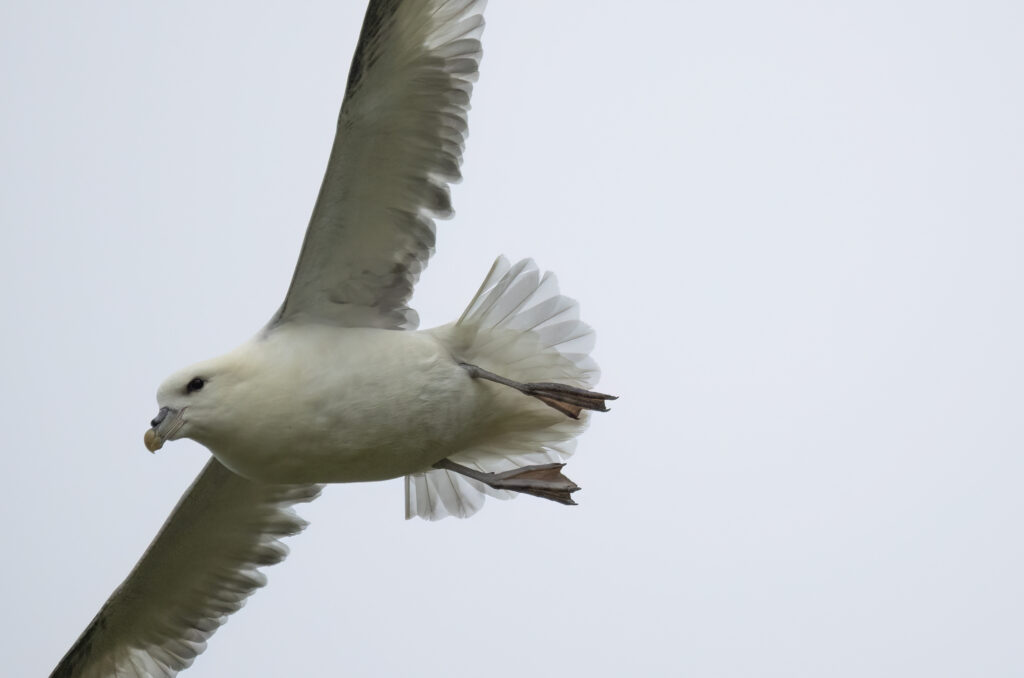
I find fulmars simply beautiful – and slightly infuriating. I adore the striking structure of their bill with the prominent tubenose on top. Look closely at a fulmar to see its naricorns – the nasal passages attached to its upper bill. Other ‘tubenoses’, or ‘petrels’, are albatrosses and storm petrels. In his book The Seafarers, Stephen Rutt describes the fulmar by saying, “Their build is architectural. The bill long, curving into a vicious, fish-dismembering hook tip. Pronounced lines like scars run along the side of the bill. Their heads are gently curving, starkly white, the dense layer of feathers never looking ruffled. Eyes as black as flint are set back into niches that are smudged like smoky eyeliner”. As I say, beautiful.
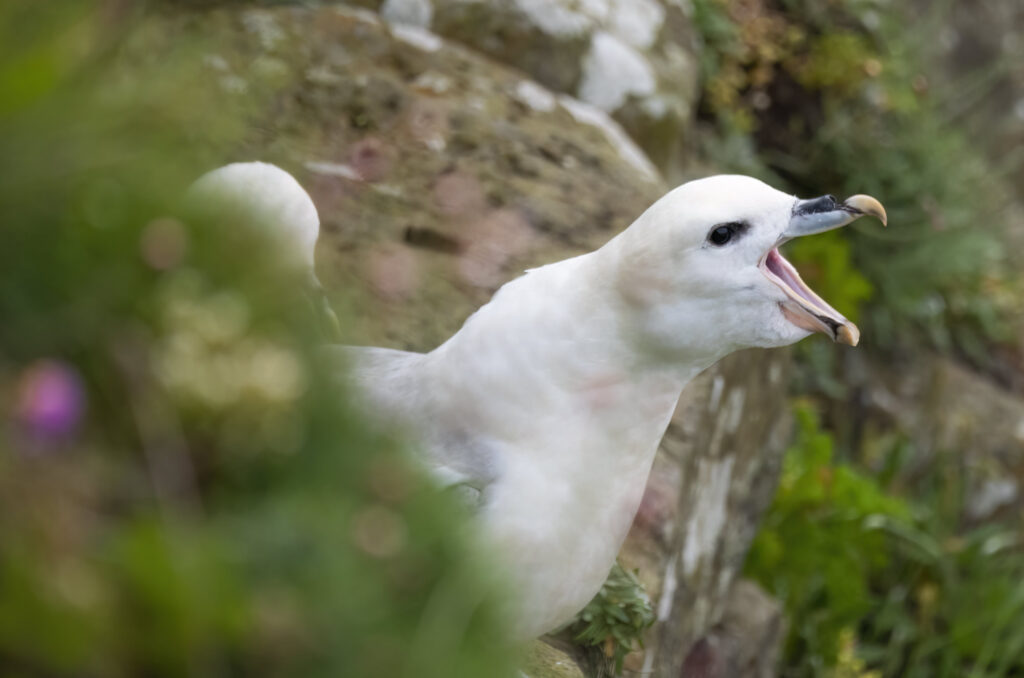
But then there is their infuriating ability to appear and disappear in moments, no matter how hard you stare at the horizon and watch for them. They defy gravity, seemingly bending space and time to their will. Much of the magic and mystery of this species comes from their ability to use the wind. Flying on stiff wings and using its strong tail as a rudder, the fulmar can adeptly adapt to the conditions. Soaring or gliding past at terrific speed, they seem most serene when the weather is severe, expending little energy riding the storms. Calm days are problematic for the fulmar’s particular style of flight, so on those occasions, you will find them sitting on the sea or at the nest.
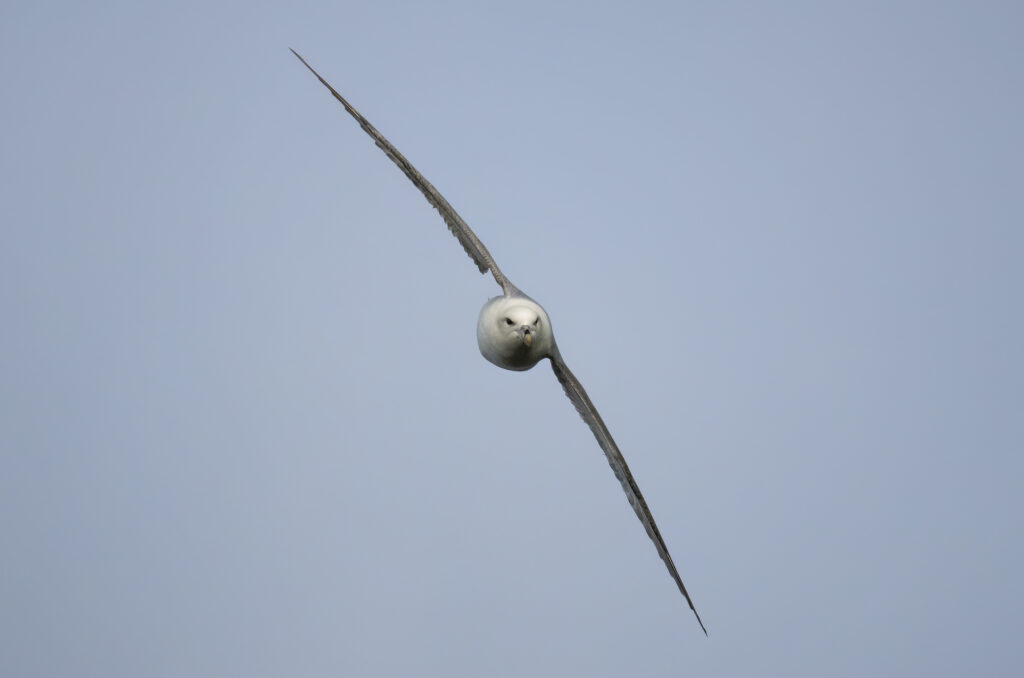
I could wax lyrical about the beauty of this bird all day, but what about capturing it? Well, if you’re looking to photograph fulmars and – like me – you’re not a natural sailor, the best time to look for them along our coasts is May onwards when they return to their nests and lay a single egg. As with all responsible wildlife photography, keep your distance from nesting fulmars and warn others to do the same. Their name comes from the Old Norse Fúlmár, meaning “foul gull”, due to the stinking oily mixture they spit at intruders. It’s, apparently, as horrendous as it sounds, nigh on impossible to wash off, and the large fulmar chicks are highly skilled at launching it at unsuspecting humans from a distance (ask anyone who’s had the pleasure of trying to ring one). If that doesn’t put you off, there are many coastal spots where you can easily see these birds during their breeding season, but I have found a couple of locations that allow intimate views away from the big seabird colonies.
Kings of the castle
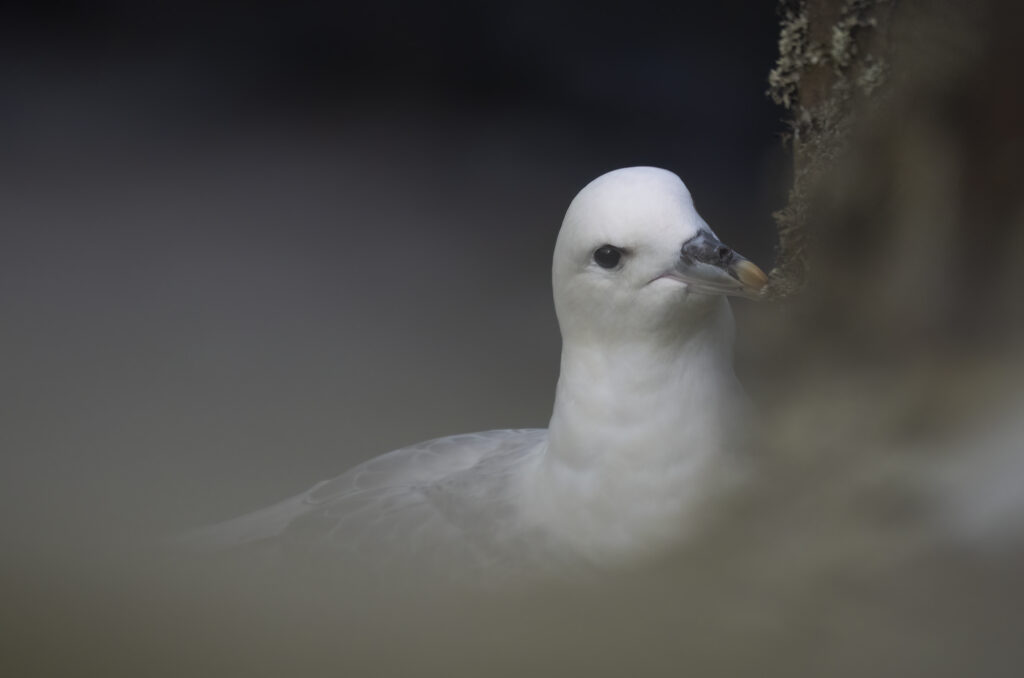
The portrait above looks peaceful, but the conditions when I captured it were anything but calm. I stood on the sea cliffs at Dunstanburgh Castle with the castle ruins to my left, the sea to my right, and a sheer drop in front of my feet. There was a gusty breeze, and fulmars zoomed by at regular intervals. Further away from the edge, kittiwakes soared and swirled. There were already loud calls from the cliffs despite it being fairly early in the breeding season.
I spotted this individual sitting quietly in a tiny space on the rock face. With my back pushed against the boundary fence to steady me, I crouched low where I could use back button focus to lock onto the bird through a gap between the jagged rocks while maintaining a safe distance from the edge. I like the ethereal feel of the image – with the out-of-focus rocks and water providing a dark and smoky contrast to the pristine white of the fulmar’s head, its silvery feathers, and the defined structure of its incredible tubenose bill.
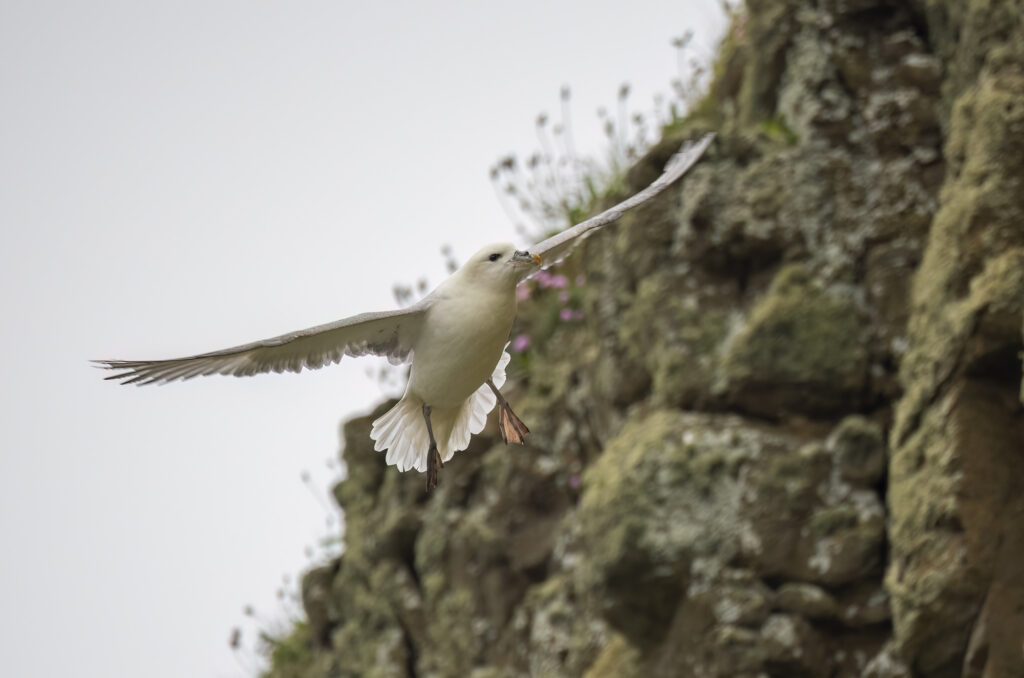
After becoming increasingly nervous about the stability of the cliff edge, we walked around to the other side of Dunstanburgh Castle and headed along the pathway under the rock face. From this low viewpoint, it was much easier to become attuned to the flight patterns of the fulmars. As they soared away from me, I chose an individual to focus on and followed their course as they swung out to sea and then circled back towards the cliff. They came close to the face, legs dangling and feet splayed – teasing a landing – before veering away and repeating the process. Despite the lack of light, I captured various images of this behaviour simply by following individual birds.
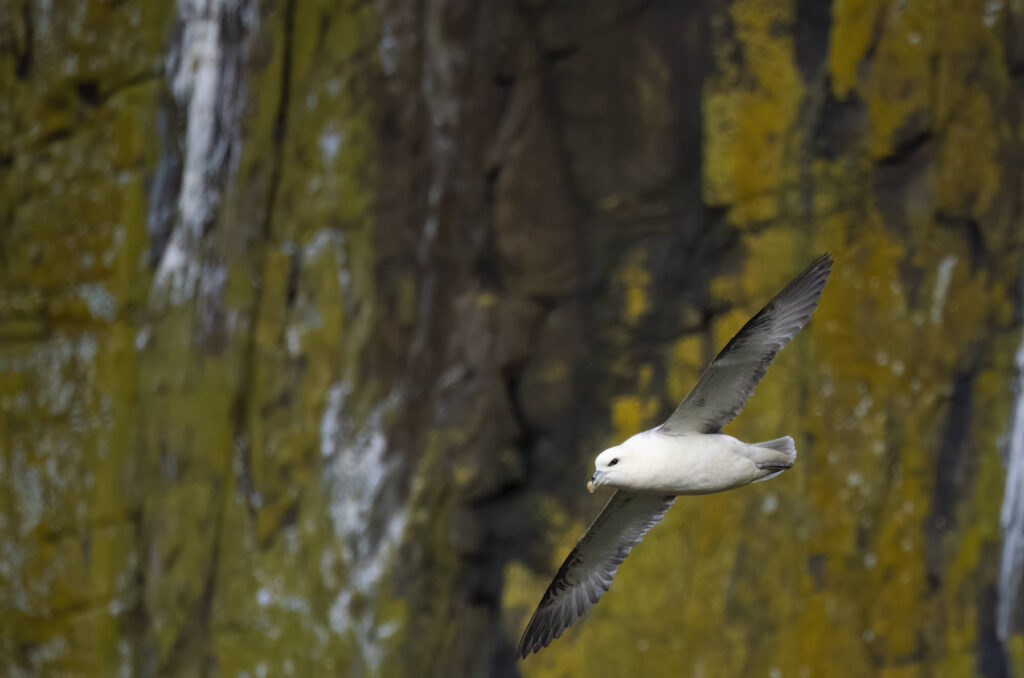
The urbanites
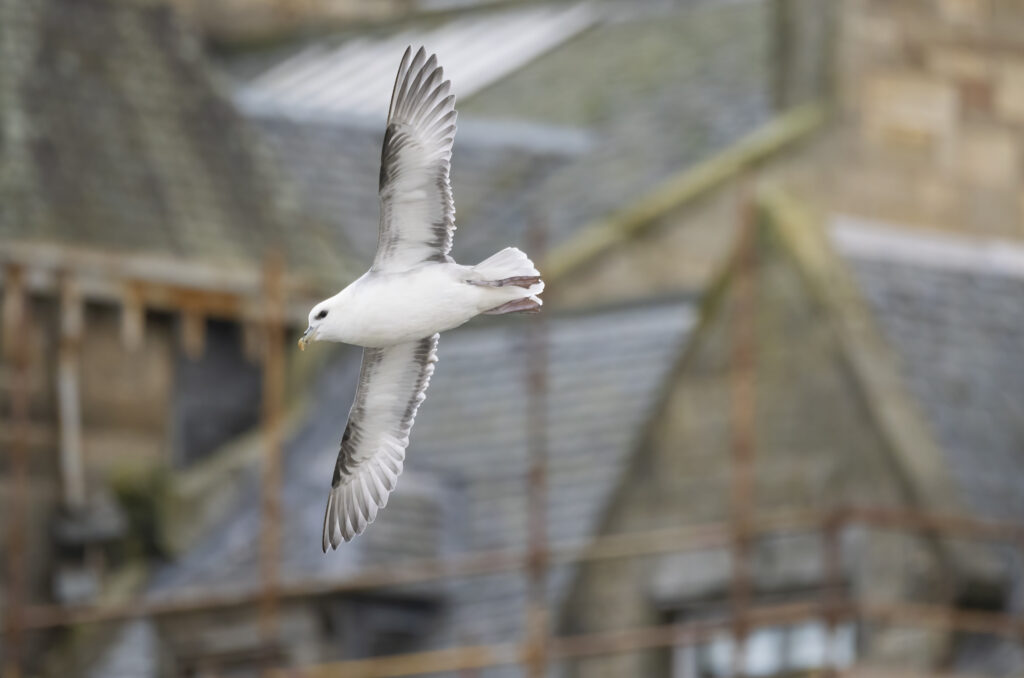
Next to a Michelin star restaurant where you can eat tattie scones with caviar and soured cream for £150 a plate while families spill out of the nearby aquarium carrying cuddly meerkats and plastic sharks, many pairs of dark eyes look on. Overlooking St Andrews Bay, dotted on the cliffs and the grassy knolls next to one of the main tourist attractions, white and grey birds were tucked up on the rock face or gliding nearby. Seeing these birds cruise past the window of the aquarium shop – oblivious to the howling wind and rain – took me by surprise as we stood inside, watching for a gap in the growing bank of dark clouds.
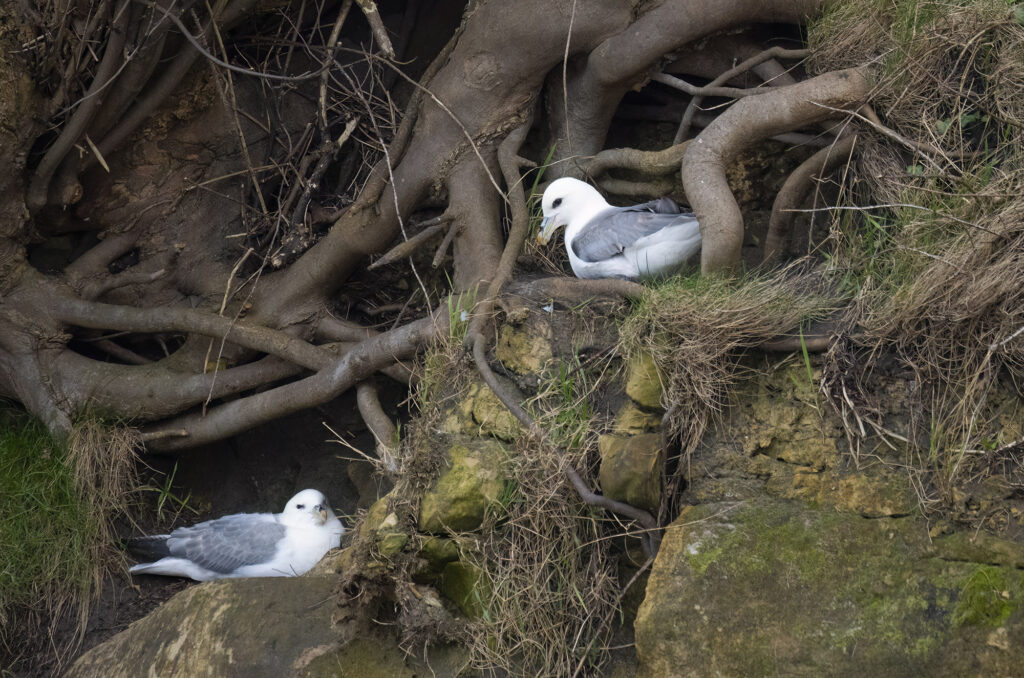
While people arrived for the penguin feeding, most overlooked the natural wildlife spectacle unfolding before them. I guess the weather didn’t help. Only a complete lunatic would be outside, buffeted by the wind and soaked through – or a wildlife photographer. It was late March, and the fulmars had returned to The Scores to rekindle their pair bonds before mating. Despite the bad weather, I was desperate to capture images of these birds both on the cliffs and soaring in front of the houses that overlook the bay – an unusual backdrop for fulmars, more often photographed in less urban surroundings. However, I quickly realised that I couldn’t capture anything usable in such a torrential and horizontal downpour, so we decided to try again another day.
On that other day, there was still a lack of light. The weather was closing in, but I was prepared for it. There also wasn’t another day to try. We were on holiday on the East Coast, so we couldn’t wait for better conditions. It was a case of increasing my ISO and hoping for the best. Luckily, the fulmars are comfortable with people watching them from the nearby paths, so capturing images without disturbing them on their nesting spots isn’t difficult. In flight, it is a case of following individual birds and waiting for them to bank in front of the buildings. All of which I managed before the next downpour.
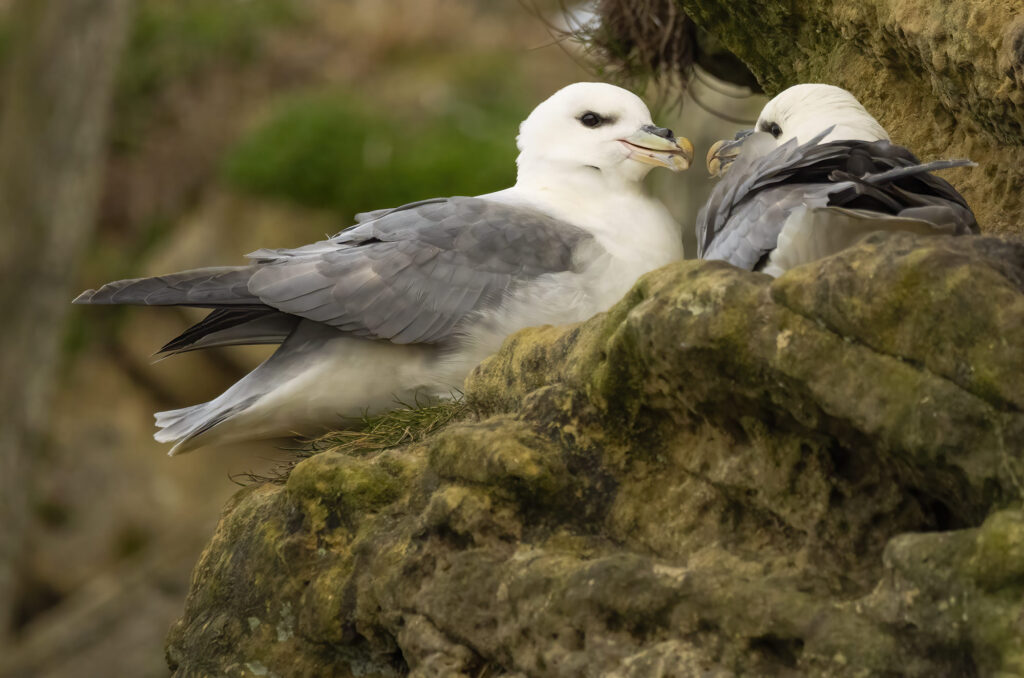
James Fisher, author of The Fulmar (1952), wrote that he had “been haunted by the fulmar” for half his life. It is easy to see why. These birds are as miraculous as they are mysterious. Part of me knows we will never really know the fulmar. Maybe that is what I find so beguiling when I lock eyes with this ghost of the sky as it materialises in front of me, out of nowhere.

